
by Lisa Chernikoff | Jun 21, 2017 | Blog
Here’s a valuable lesson for anyone involved in content marketing.Recently, I was chatting with a small group of guests at a party. Then, the other partygoers gracefully exited the conversation and suddenly, I was trapped. I looked right. I looked left. But my efforts were futile. I was officially stuck in a never-ending conversation. Yes, I had entered the dreaded Party Vortex, which is similar to the Polar Vortex but much less cold and much more dangerous.
But the real problem, and what made the circumstances so precarious, is that the never-ending conversation wasn’t a conversation at all. It was a monologue without audience participation. It was a soliloquy but far less articulate. It was all about my new acquaintance, who would most certainly not make the cut to be called a friend. As he continued to talk at me for 20 minutes, which felt like 20 hours, I smiled and nodded but secretly plotted my escape. Yet, despite my best Party Ninja skills, there was no way.
Spoiler alert: I survived this party trauma and lived to tell the tale. But sadly, this blog is not about party etiquette. It’s about content marketing because my Party Vortex nightmare is undeniably similar to the experience that potential customers might be having with your content right now.
While content marketing missteps are many and frequent, the biggest, most overarching mistake is that your content is all about you. It’s all about your company and your solutions. It’s all about your technology saving the world. This is the sort of content that not so subtly shouts “buy this.” After all, isn’t that your end goal?
However, touting the features and functionality of your newest product under the guise of a white paper often fails to make an impact especially as healthcare professionals becomes savvier to the idea that they’re being sold to everyday. It falls short because it doesn’t take readers, your potential customers, into account. It doesn’t address what readers really want to know and what will compel them to take action. It leaves readers hanging, and then what happens?
Rather than completing a “contact us form” on your website to learn more, they’re lost to you. They may have simply decided that it’s not the right time to buy or that your company isn’t the right partner. They may have even gasp moved on to one of your competitors.
From company-focused to customer-focused
When developing a content marketing strategy and crafting each piece of content to support that plan, it’s critical to keep your future customers top-of-mind. Remember that every decision-maker or influencer that engages with your content could be your newest client, smartest super user, or most reliable reference.
How can you better connect with your audience? It’s simple but shockingly hard to do. Write what they want to hear about, rather than writing what you want to say. Write what they are hungry to learn about, rather than what you’re desperate to teach them. It’s a small change in perspective that makes a big difference. And while that may seem obvious, it’s not abundantly clear to many marketing and PR professionals unless they’re just doing it wrong.
Effective, customer-focused content prompts an “aha moment,” by sharing new ideas or even the same old ideas in a new way. This matters because encouraging readers to think differently is the first step to being seen as a thought leader in their minds and then as the ideal strategic partner.
These new perspectives aren’t necessarily earth-shattering but they draw readers in. Customer-focused content addresses the problem you’re solving, not just the solution.
It also doesn’t oversimplify the solution by presenting painless and perfect success stories of IT solutions that were seamlessly implemented and quickly gained adoption by all end users. Further, it provides insights on process improvements, change management, and other tactics that readers can put into action, aside from just buying your technology.
Real-world tips and lessons learned are valuable takeaways that readers appreciate much more than a bulleted list of your product’s bells and whistles.
Your new customer-focused content will not only satisfy readers but also help turn more potential customers into actual ones. Even more importantly, we know that your new, improved content will ensure that you’re invited back to the party. And isn’t being invited back to the party the ultimate goal of any marketing?
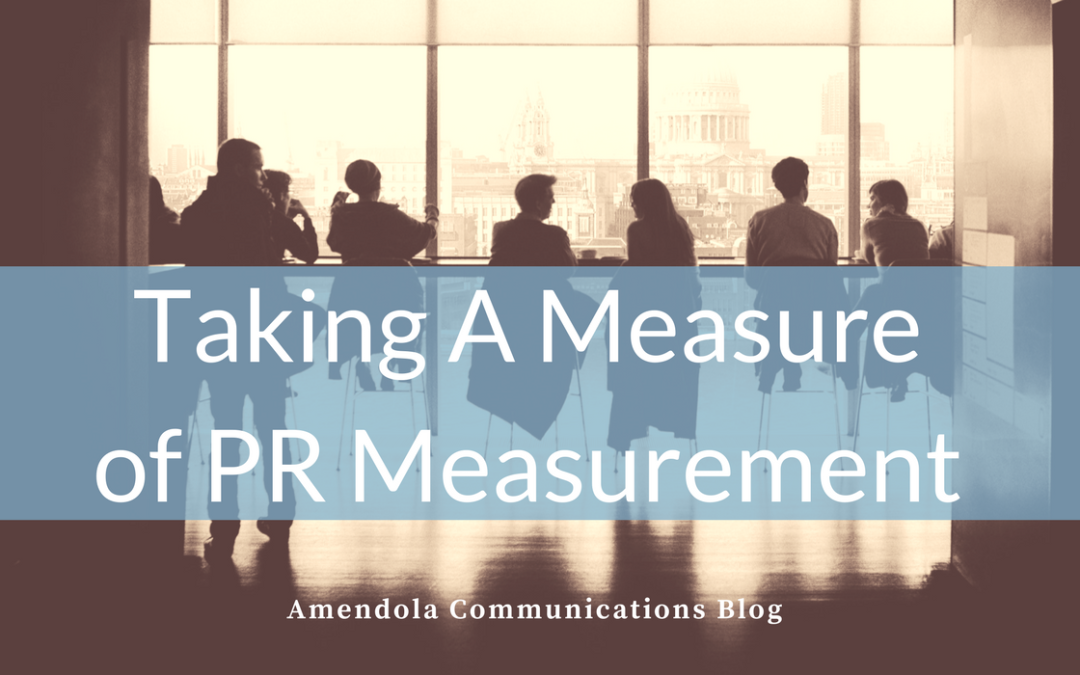
by Ken Krause | Jun 14, 2017 | Blog
So there you are, listening to the PR agencies you’ve brought in to pitch your business. Everything is going swimmingly, and you think you’ve found your top candidate. Then you do it ask the one question that strikes fear into the heart of nearly every PR professional: what sort of PR measurement tools will you use to measure success?
At that point the air gets thick, and suddenly the only sound in what was once a room filled with lively discussion is the steady whirring of the HVAC system in the background.
It’s not that PR people are afraid to be measured on their accomplishments. It’s just that they’ve been down this road enough times to know that’s not really the question that’s being asked. The actual question is more along the lines of “How will you prove your campaign was solely responsible for improving our sales?” That goes double if it’s the VP of Sales who asked the question.
While it would be awesome if you could do it, tying PR to sales isn’t really a fair measure of the effectiveness of the campaign. That’s not just me saying that.
A few weeks ago I attended a webinar led by PR measurement guru Katie Delahaye Paine where she discussed this topic. The analogy she used was a PR campaign to sell cars. If the campaign succeeds in driving 100 people to the showroom but no cars are sold, would you say the campaign failed? Doubtful.
There could be all kinds of reasons the cars weren’t sold. Maybe the showroom never opened. Maybe the salespeople were rude or incompetent. Maybe prospects went for a test drive and discovered the interior noise level was somewhere between “WWII-era Sherman tank” and “jet engine.” Maybe everyone wanted a yellow car and it didn’t come in yellow. You get the idea.
Whatever the reason, it’s not because the PR campaign didn’t do its job. The people came. They just didn’t like what they found once they got there.
The stakes go up with HIT
When you’re talking about health IT (HIT) products or services it gets even more difficult to attribute a sale directly to the PR campaign. First of all, the average HIT offering costs many times more than a car. Would you buy a car based on what you read in a press release, or a byline article, or even a white paper?
Highly unlikely. Once you became aware of the car you’d probably want to research it on the Internet see what professional reviewers say as well as people who already own that vehicle. You’d want to compare it to other models. You’d want to kick the tires (even though that’s completely pointless) and take it for a test drive. Cars cost too much money, and most of us keep them for too long, to just purchase one based on the PR campaign.
So why would anyone purchase an expensive HIT product or service their business depends on, and that they’ll probably have to live with for a few years, based solely on a PR campaign?
The answer, quite frankly, is they wouldn’t. Most things in HIT are considered purchases that require many exposures and steps before the decision is made. The PR campaign will be useful in creating awareness, and a good content program will help walk the prospect through the decision-making process.
But at the end of that cycle, which could take several months or even a year or two, it will be very difficult to suss out exactly how much PR contributed to the sales that do happen. Not to mention virtually impossible to determine how many sales didn’t occur due to some issue that had nothing to do with the quality or effectiveness of the PR campaign.
There is an exception, at least for online sales. Google Analytics does have a pretty sophisticated way of tracking the lifecycle of a sale. Rather than simply relying on the last click, the analytics can associate all the activities of individual users together to provide a history of all their clicks, including their entry point off a PR campaign. That, however, takes some pretty sophisticated work performed by outside specialists. Given that purchasing HIT products and services is a team sport, you have to determine whether it’s worth the time and effort to attribute those sales to PR.
Oh, and as far as ad equivalencies go, don’t bother. Calculating the cost of purchasing the same space versus getting it “free” from PR pretty much went out with parachute pants and giant boom boxes.
What you can measure
Ok, if that doesn’t work for measuring PR, what does?
One good measure is web traffic. The measurement can be overall web traffic, and/or spikes that occur around a PR campaign event such as a press release going out or content appearing in a media outlet or blog.
Measuring spikes in traffic is akin to the so-called “flush test” back in the early days of TV. Executives judged the popularity of Milton Berle’s program by the noticeable drop in water levels when the show went to commercial. Not exactly precise, but it does provide some indication your materials are causing prospects to take a positive action.
Another measure is downloads of your materials. These generally break into two categories the materials that can be freely downloaded, and gated content that requires visitors to give you their name and email address in order to complete the download.
Free downloads are good for gauging general interest among those considered “suspects,” i.e., the casual consumers of your materials. Those willing to go through the requirements to obtain the gated materials are your more serious prospects.
Many organizations like to measure “share of voice” within their markets. They want to see how much of the conversation around a given topic they own versus their competitors.
A simple form of this measurement is volume, as in how many press releases did we put out compared to our competitors? You can also break comparisons down around earned media (interviews, byline articles, product reviews, or anything that requires some effort on the part of the media outlet) and positive-negative-neutral coverage.
The latter generally isn’t a good measure in HIT because the coverage in general will almost always be positive. HIT media outlets are generally looking to inform their audiences about ideas, products, and services they can use, not tear them apart like the political media. In some rare instances, however, positive-negative-neutral can be relevant.
There are others as well. The key is to start by determining what is important to help your organization drive the activities that lead to sales, and then measure the success of those activities. For example, if you know that securing 50 sales at the end of the year requires 2,500 prospects to be deep in the sales funnel (downloading gated content, speaking with salespeople, etc.), and getting 2,500 prospects means you need 15,000 suspects downloading free content out of a total of 100,000 visitors to your website, you have a pretty good idea of how to measure success.
If you do all the other steps but miss the mark on the 50 sales, you’ll also know you either need to adjust your upstream figures, or you have a problem in closing the sale. Either way, you’ll have a pretty good idea of what your next steps should be.
Measure to inform
One of my other favorite things Katie Paine says is to only measure what you’re willing to change. There is no point in measuring the value of wearing pants if you will never not wear pants.
To make PR measurement work, you must understand the actions you’re trying to drive and be willing to change the program if it isn’t driving those actions. Once everyone understands the goals, and PR’s role in achieving them, you’ll know how to measure success.
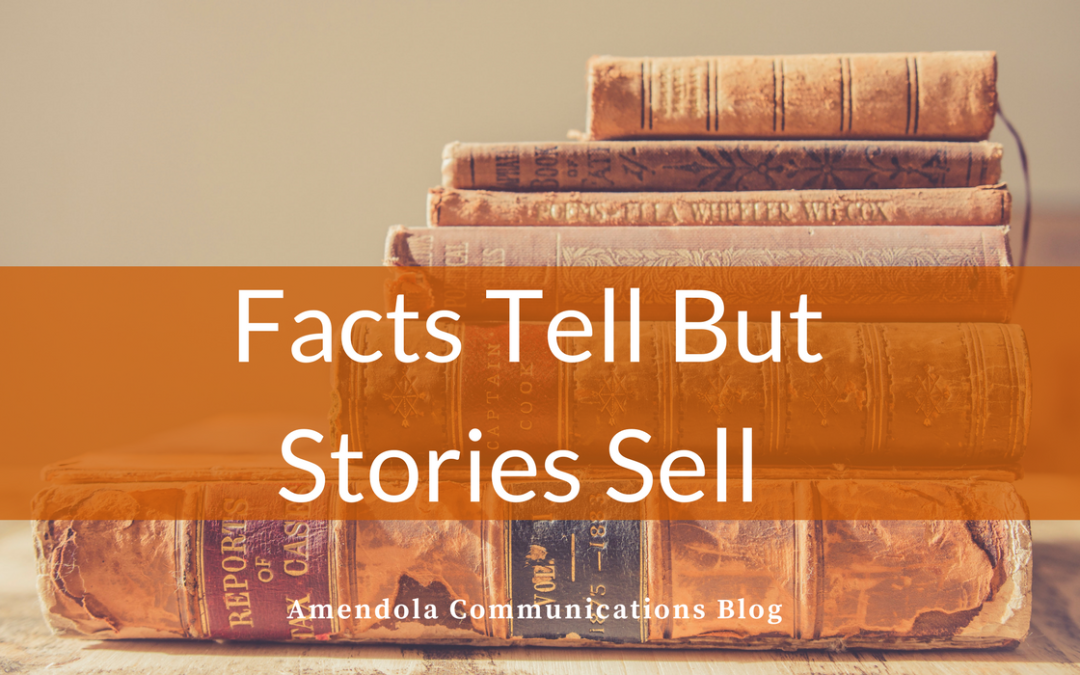
by Marcia Rhodes | Jun 7, 2017 | Blog
“Story telling is the oldest form of teaching,” Matt Cavallo declared when we met on May 23. I couldn’t agree more. Great story telling has always intrigued me. Maybe that’s why I’m in PR. I have always believed that behind every organization is a zealous individual with an epic story waiting to be shared. It’s usually the CEO or founder, though not always.
Matt is a passionate patient advocate who dedicates his life to the fight against multiple sclerosis. He has been named among the top 10 Social HealthMakers by WCG and his blog was selected as one of Healthline’s top multiple sclerosis picks in 2015. His story of being diagnosed and overcoming the physical and emotional challenges associated with having a chronic disease can be read in his memoir, The Dog Story: A Journey into a New Life with Multiple Sclerosis.
What started as a simple half-hour meet-and-greet with Amendola Communications agency staff turned into a 90-minute conversation. Who has that kind of time, you ask? Well, Matt knew how to keep our attention: he had us laughing one moment and fighting back tears the next. It’s a skill few people have but many aspire to. This ability to connect comes in really handy during media interviews at large trade shows (such as HIMSS) where our PR clients (health IT vendors) get to pitch their product or solution to editors who decide on the spot whether they care enough to write about them or not.
GetWellNetwork founder and CEO Michael O’Neil was diagnosed with non-Hodgkin’s lymphoma at the age of 28. While the medical outcome was excellent, the patient experience was challenging. After four cycles of chemotherapy, he started GetWellNetwork to help hospitals improve performance and outcomes through patient engagement. Michael and his team work tirelessly to ensure the voice of the patient is heard. Today, more than 4.6 million patients use GetWellNetwork technology to engage in their healthcare. Take a minute to watch Michael tell his story in this short video.
Growing up in a family of doctors, ClearDATA CEO Darin Brannan got a firsthand look at the challenges healthcare practitioners face in treating patients using paper and outdated technology. It made him painfully aware of the number of people who die each day as a result of medical errors long before it became national news.
Despite the availability of electronic health records and other technologies that were supposed to solve the problem, reports show that more than 1,000 people still die each day due to medical errors. At the center of this seeming disconnect is a lack of cohesiveness among advanced information technologies. Darin believes that, “Healthcare is less of a science problem, it’s more of an information problem.”
In 2011, he co-founded ClearDATA to apply his cloud computing expertise to healthcare in order to remove the technical obstacles inhibiting patient safety and costing lives. Today, ClearDATA is recognized by organizations such as CB Insights as a leading healthcare information security services company, with $54 million in funding and a customer portfolio that includes some of the largest healthcare providers in the nation.
Dave Bennett, EVP, Orion Health, is passionate about precision medicine. He often tells the story about his son, Carter, who has cystic fibrosis (CF). Here is how he tells it.
Carter’s story
About a decade ago, my oldest son, Carter, was diagnosed with cystic fibrosis.
Like most kids with CF, Carter had a host of physical problems, like lung infections due to mucous build-up and thrive issues due to pancreas blockage. In eighth grade his lungs needed a thorough cleaning, so he was hospitalized and homebound for three consecutive weeks with a PICC line.
Five years ago, Vertex Pharmaceuticals released a drug designed to address Carter’s specific genetic variation of CF, one that only four percent of patients have.
But when I told Carter’s doctor about it, he said it wouldn’t help Carter because he didn’t have that genetic variation.
Once I pressed the doctor to review 60 pages of Carter’s data, however, the doctor soon reversed his position.
“This is a game changer,” he said.
Now let’s be clear: Carter’s doctor is a great doctor. But he didn’t have the tools to help him analyze that 60 pages of data and connect my son to a promising new drug therapy that went on to stabilize his lung function, end his annual sinus surgeries, eliminate his regular bronchial scopes, made his ED visits a thing of the past, and allowed him to flourish into a six-foot-two-inch, 225-pound captain of his high-school football team. Today, Carter is a thriving college student, our payers don’t have to pay for all the procedures mentioned above anymore, and his mom and I don’t worry about him one bit.
That is the promise of precision medicine exemplified. But in the future, rather than rely on a highly interested advocate like a parent who’s passionate about precision medicine to provide that cognitive support, payers and providers will be able to rely on technology that synthesizes and analyzes the data (e.g., those 60 pages Carter’s doctor couldn’t effortlessly process) and utilize it in the right context at the right time.
“This is my mission,” Dave tells journalists. “I want to help doctors and patients in making decisions about what will help them. To do this work, you really need focus at the mission level, because it’s going to change healthcare for the better and make a difference in people’s lives.”

by Margaret Kelly | May 31, 2017 | Blog
In the good old days of the Internet (we’re talking the 1990s here), clients grappled with the decision to jump on the newest marketing scheme the website. Advertising and PR agencies, as well as marketing directors, had widely divergent opinions about several components that are now taken for granted.
The conversation has gone from, “Do we really need a website?” to “How can we make our website better?”
I was on a marketing team that received a MAME Award for Best Website. (The Major Achievements in Merchandising Excellence golden trophy is to the homebuilding industry what the Oscar is to Hollywood.) My employer strolled into my office and said, “Did I mention you’re going to be the guest speaker on websites at today’s Homebuilder’s Association meeting? We leave in 20 minutes.” After the shock wore off, I must have delivered an intelligent lecture because many of the builders asked me to evaluate their websites.
What surprises me today is that many of the same problems I saw with sites in 2003 still exist. Sure, with WordPress and new design trends, the hot features of today are hero images, video and animation. But in the race to beef up data capture and content marketing, simple, everyday details can easily be overlooked. Vendors and publishers alike can up their game and make it easier for their audience to engage, sign up, download, interact and purchase.
Here are 6 key areas you should evaluate on your website to ensure maximum engagement:
Contact Information
You would think contact information would be a no-brainer. But when I’m wearing my research hat, nothing makes me yell “REALLY?!” faster than wasting time hunting down basic information. Your address and phone number should be easy to find. Your “Contact Us” link should be at the top or bottom of every page. If people can’t reach you when they have questions about your event or product, they will likely move on to the next vendor on their list. Don’t be coy. Give me your 411!
Company Directories
In this digital world, time zones abound and chances are someone out there is looking at your website when you are not open for business. There are pros and cons to both popular methods of people reaching you after hours: “Contact Us” forms and Company Directories.
A contact us form (which is what we have on our own company website) can be programmed one time and simply lives on your website. Visitors can, however, be frustrated if you create a pre-populated and mandatory dropdown-list. What if the reason for contacting you isn’t on that list?
My personal favorite is Company Directories such as the one at HIMSS. It’s easy to find their staff and there’s no question who does what. But, you must keep on top of it and update it often.
Monitoring
So, you’ve got an “info@” email address posted on your website. It’s better than nothing. But who reads your incoming message? More than one person? Do you respond to every inquiry?
Whether it’s someone asking a question or providing feedback, a simple follow-up lets your audience know you’re on the ball.
And please watch the automated replies. It’s great to receive a quick email referencing my trouble ticket number. But it doesn’t make a very good impression to acknowledge you received my email and will respond shortly, and then never get back to me.
Follow up. Every. Single. Time.
Tell me thank you, let me know you’ll consider my suggestion, or forward me to the person who can really help me. Don’t leave me in the dark.
Oh, and remember to redirect the routing of your website mail if you have a change in staff.
Testing
The team members monitoring your web mail inquiries and data capture alike will know the average number of contacts you receive per month. Any sudden drop in those numbers should be a red flag.
Minor updates in website programming, firewalls and email proxy servers can all wreak havoc on your incoming messages. Test your site from time to time. Send yourself an email from the website or fill out any forms to ensure everything is still running as it should.
Social Media Platforms
Are links to your social platforms elusive? Are they current?
I’ve taken over social media duties for many clients and I am dismayed when I discover they have a LinkedIn account but no way to reach it through their website.
If you have multiple channels, make sure website visitors can reach them. By the same token, if you haven’t tweeted since 2013, it might be best to remove the little blue bird until your account is more current.
Yes, websites can be expensive to program. But a laundry list of social media platforms adds an unnecessary degree of difficulty that makes it so much harder for visitors to engage. Our eyes are now trained to look for social graphics and a text list of Twitter and Facebook will be overlooked.
A much better example is to use the icons with which everyone is familiar. No questions here on how I can engage!

But let’s not get carried away. Mashable, gotta love you, but honestly, which Twitter handle do I use when I’m trying to share an article you published?
Social Media Sharing
Publications count on social media to increase readership of their articles. Even vendor websites add sharing buttons to the side of their blogs to encourage readers to engage. What surprises me is how often a pre-programmed post opens in my Twitter profile without basic information such as a Twitter handle.
When you set up your Share buttons, be sure the website plug-in of choice includes your Twitter handle. It’s a common mistake and simple to fix. Also, Twitter doesn’t include links in the character count, but it’s still nice to provide a bit.ly (or whatever service you use) so visitors can RT and comment.
Which is, after all, what engagement is all about. To wit, here are some great examples of engagement done right:
Forbes This site could really improve by adding their Twitter handle and a shortened link, but they get kudos for adding several options of “Tweet This” above the article. Readers will be quick to click that button and get the message out.
Becker’s Hospital Review Share any of their articles on Twitter and the post starts with “Reading @beckershr” followed by the article title and the link.
Health IT Outcomes Push the Tweet Share button and the post is auto-populated with the title of the article, a shortened link, and “via @HITOutcomes.”
Politico’s Morning eHealth Not only does the Share button have all the necessary bits, but the journalists Twitter handles are displayed for even further engagement.
Sometimes it’s the little things that matter. Not only are these suggestions relatively low-cost fixes, the attention to detail will elevate your website to social success.
What suggestions do you have for making websites more social? Please share them below.
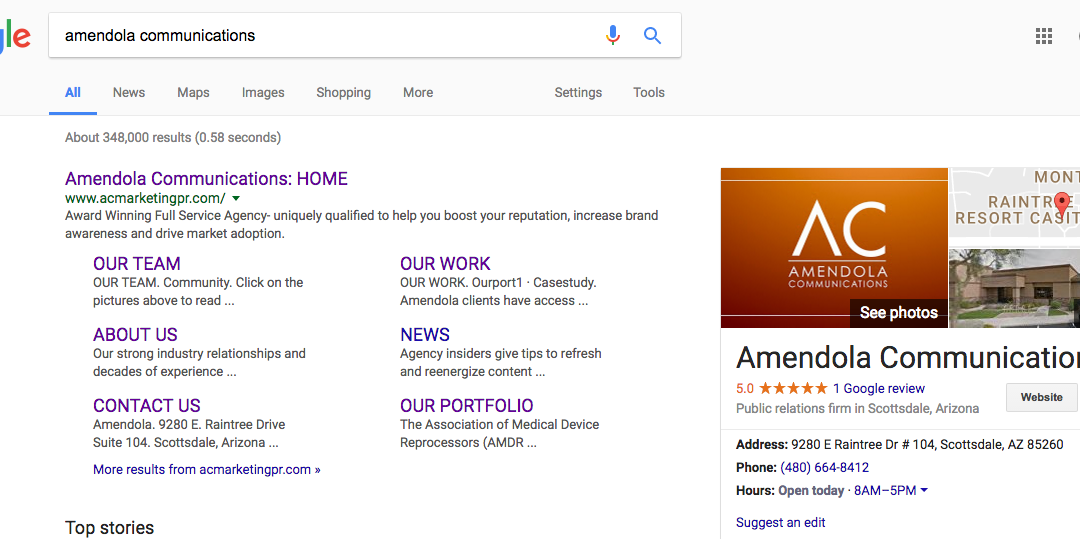
by Jenna Warner | May 24, 2017 | Blog
Grab your Instagram-worthy coffee and make sure you are not guilty of these social media crimes.
Social media marketing is fast paced. Not only does your well thought-out and carefully sliced up 140-character tweet have a short shelf life, but each platform changes almost daily. However, there are some nuances that remain the same. These are my top 5 mistakes to avoid in the ever-evolving social media game.
1. Use old, wrong or low-quality logos
Twitter’s logo is a bird, not a plane and not a weird version of tumblers “t”. The official logo became the bird with no text in 2012. No, I’m not paid by Twitter’s branding manager, but I am fired up about getting everyone on the same page about the logo misuse!
Whenever you need a social media platform’s logo, it is best to visit their branding guidelines or resources. Usually, you can download a free kit that has the logo in many colors and every type of file format.
Another important logo faux pas to watch out for is the dreaded, low-quality profile picture or thumbnail. Nothing screams “We don’t care about this” more than a bad photo as your profile picture. It’s the first impression your potential customers see and you want it to be a good one! Don’t forget to look at your 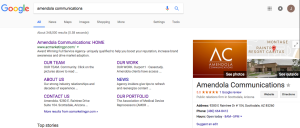 entire digital presence to make sure you have at least one high-quality photo listed with your brand. Google search is a commonly missed opportunity. Don’t worry, it’s an easy fix! Google uses their very own social network information first to populate the search results side bar. Make sure you gave a great photo or high-quality logo and accurate information listed on your Google+ account.
entire digital presence to make sure you have at least one high-quality photo listed with your brand. Google search is a commonly missed opportunity. Don’t worry, it’s an easy fix! Google uses their very own social network information first to populate the search results side bar. Make sure you gave a great photo or high-quality logo and accurate information listed on your Google+ account.
2. Spam following attacks
Managers that do this are like the sign spinners of social media marketing.
I understand how this strategy developed as you can get short-term results from using this tactic. But these followers are hardly worth your efforts and are most likely either spam-bots or accounts that are not linked to your decision makers.
You should still keep your ratios clean (follow fewer accounts than you have followers) and follow industry leaders and influencers. The key is to focus your efforts when it makes sense for your strategy, not sporadically and aggressively. Twitter will actually step in when it becomes too much of a problem, but please, never get to that point.
3. Miss an engagement or sales opportunity
Uh, hello? It’s called SOCIAL media. Be social! Especially if you are a B2B organization, this type of engagement just isn’t as common as the B2C counterparts on social media. Capitalize on the opportunity as it arises! There is no shortage of free software available to help manage your engagement. Find brand champions that aren’t tagging your account, yet still praising your name, fix customer problems or complaints and develop new sales leads.
Make sure your engagement is timely and relevant. Search all hashtags used or links shared before posting or replying. Also, make sure the account you are engaging with is a real person not just a bot or an irrelevant twitter user.
4. Forget to sign out of the company account
Yikes! This is an ugly one. People get fired over this and it is not a great situation to be in. Personally, as a practicing social media manager, I steer clear of posting politics on my personal social accounts and I keep it PG. This choice decreases my risk of posting something truly terrible on a company account. Newton’s law of gravity doesn’t apply to the internet. What goes up, stays up on the internet.
There are too many examples like the twitter accident that happened to Chrysler.
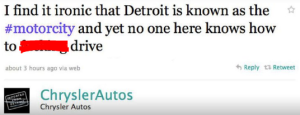
5. Assume you have learned everything
The beauty and challenge of social media marketing is that it’s always changing. It’s hard to be the ultimate expert in something that is always changing and moving! Stay in touch with reality and assume there is always something new to learn and observe. I find it to be the best way to approach social media.
Hashtag conversations and meanings can change hourly, platforms have repositioned based on users habits and algorithms change all the time! The Internet is a place where traditional marketing practices and new forms of communication can be used in collaboration to create meaningful engagements with your audience.
Here are a few methods I use to stay up-to-date on my social media marketing skills:
Use social media platforms for personal use
Read and subscribe to social media marketing blogs and news outlets
Listen to podcasts on the digital strategy
Attend webinars on social media marketing
Look at competitors or other industries and figure out what is working for them
Make sure not to commit any of these social media mistakes and comment below with other social media rules that stand the test of time.

by Tim Boivin | May 10, 2017 | Blog
When it comes to product launches, many companies hang their hat on making a big splash at the biggest trade show in their industry. And then they are disappointed.
For those targeting the healthcare IT market, that usually means HIMSS. For those targeting providers, the Medical Group Management Association (MGMA) show is often cited as a great launching pad.
For payers, it’s the Association of Health Insurance Plans (AHIP) Institute & Expo. For a life science/pharma audience, eyeforpharma Barcelona is a perennial favorite due to the heavy pharma presence in Europe.
But as Caterina Lui of PR Newswire points out on the Beyond PR blog, launching during a big show is not always ideal. And in another Beyond PR post, she provides excellent insights on whether your solution is even truly ready to launch.
One of the biggest drawbacks to launching at such large industry trade shows and conferences is the sheer number of companies who are planning to do likewise. This becomes an even more pronounced challenge if your company is launching a minor upgrade to its platform or app, or if your company is a newcomer or relative unknown in the market.
In both cases, a launch as much as a month or even two months before a trade show can help build momentum going into the show, instead of being crowded out by all the PR noise generated during the show. It allows you a greater opportunity to secure quality time with reporters whose conference schedules (covering educational sessions, filing stories, doing social media posts, etc.) are pretty crammed during the conference. It also allows you to brief analysts at the top firms ahead of the launch.
Here are some other best practices for trade show launches from my Amendola colleagues:
 Lisa Chernikoff, Account Director In the best-case scenario for a product launch at a trade show, you can not only include results and ROI from a beta customer or pilot site in the press release, but also have that client available for an interview at the show (or before or after). Clients speaking about their experience with the product is much more beneficial than company execs talking about features and functionality.
Lisa Chernikoff, Account Director In the best-case scenario for a product launch at a trade show, you can not only include results and ROI from a beta customer or pilot site in the press release, but also have that client available for an interview at the show (or before or after). Clients speaking about their experience with the product is much more beneficial than company execs talking about features and functionality.
Also, make sure that the new product info highlights not only what it is, but also why it really matters for the target audience. What are the larger implications for the market? How does it relate to industry trends and issues?
Chad Van Alstin, Content & Media Relations Manager As a former editor, I always found it challenging to cover product launches at trade shows without some kind of prior knowledge. Simply telling me a company was going to announce a product pretty much melded together with all the other launches after a while.
There has to be some kind of teaser or hook a spoiler that many companies are often hesitant to give away ahead of the show that is released to the media a week or two in advance. Otherwise, it all just becomes noise after a while, especially with a huge show like HIMSS. I think too many companies rely on the fact that editors will simply want to cover whatever it is the company is doing but in a market with so many new names added to a long list every year, that’s just never the case. You have to spoil things a little bit in order to drum up interest.
 Amy Koehlmoos, Senior Account Director Leverage the power of social media – create a Twitter campaign around the product launch and use the show’s #hashtag to reach attendees. As with any campaign, frequency is key, but be sure to follow best practices and include plenty of non-promotional tweets to maintain an optimal content mix.
Amy Koehlmoos, Senior Account Director Leverage the power of social media – create a Twitter campaign around the product launch and use the show’s #hashtag to reach attendees. As with any campaign, frequency is key, but be sure to follow best practices and include plenty of non-promotional tweets to maintain an optimal content mix.
Rich media (images, videos and graphics) will help your tweets stand out above the noise, and don’t be afraid to get creative. People are much more likely to share a clever meme than a picture of a widget.
Stephanie Janard, Senior Writer — If you’re launching a new software solution, there’s no hard and fast rule that says you have to actually demo it. In this era of value-based care, why not stage a demo that  shows how life can be better as a result of using your newly launched software or app? Likewise, if you have a tangible, physical product to demo, make a real show of it preferably with a real-life example. If you can get champion customers on the act, all the better.
shows how life can be better as a result of using your newly launched software or app? Likewise, if you have a tangible, physical product to demo, make a real show of it preferably with a real-life example. If you can get champion customers on the act, all the better.
So there you have it from the A-Team experts (and PR Newswire). Should you bet it all on a trade show launch or not? It may be a crapshoot, but make sure you evaluate all your options both at the show and in other timeframes before committing your entire marketing budget to the effort. And please share your thoughts below on what you have seen that works well for a product launch either at, before or after a trade show.












